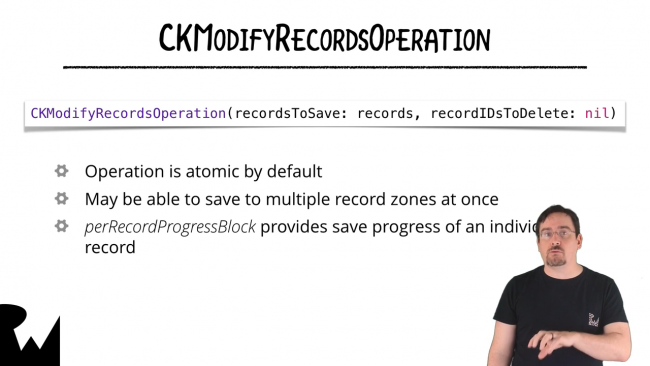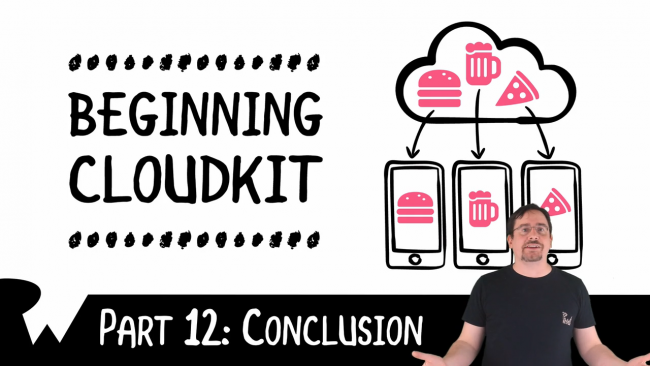In recent months, we’ve released updates to courses such as Beginning Realm on iOS and Intermediate Realm on iOS, introduced brand new courses like Advanced Swift 3 and iOS Design Patterns, and covered advanced topics in weekly screencasts.
Today we’re happy to announce another course: Beginning CloudKit, has been updated for Swift 3 & iOS 10!
CloudKit can be used to implement your own custom iCloud solution. It can be also used to create a web service backend without having to write any server-side code! In this 12-part course, you’ll learn all aspects of the CloudKit framework including important basics like managing databases with the CloudKit Dashboard, and creating and modifying records, as well as more advanced features like managing data conflicts, sharing data, and more.
Let’s take a look at what’s inside this course:

Video 1: Introduction. Looking to tie your app into the Cloud? Learn all about Apple’s solution, CloudKit, that allows you to have a persistent online backend for your app.

Video 2: Containers & DBs. Learn about two fundamental objects used throughout the entire CloudKit API: Containers and Databases.

Video 3: CloudKit Dashboard. CloudKit allows you to model data on Apple’s servers. This video will cover the basics of working with their browser-based tool.

Video 4: Saving Records. This video covers the basics of saving data to CloudKit using the convenience API.

Video 5: Fetching Records. This video teaches how you can read data from CloudKit using the convenience API.

Video 6: References. References are used to relate records to each other. This video covers the basics on how to create references and then how to let CloudKit know about them.

Video 7: Subscriptions. Be informed about record changes by using subscriptions. This video covers their usage.

Video 8: Operations. After a while, you’ll reach the limits of the convenience API. Thankfully, you can use operations instead, which provide a lot of power and flexibility.

Video 9: Managing Conflicts. Eventually, users will try to save old data over new data. This may be their intent or it may happen by accident. This video will teach you how to manage these conflicts.

Video 10: User Accounts. Learn how to use user accounts to determine the status of a user and to fetch data for the the user.

Video 11: Sharing Data. CloudKit has recently added a new database: the sharing database. This video will teach you what it is, and how to use it.

Video 12: Conclusion. This video concludes the series and will provides some resources on where to continue.
Where To Go From Here?
Want to check out the course? You can watch two of the videos for free:
The rest of the course is for raywenderlich.com subscribers only. Here’s how you can get access:
-
If you are a raywenderlich.com subscriber: The entire course is complete and available today. You can check out the first part here.
-
If you are not a subscriber yet: What are you waiting for? Subscribe now to get access to our updated Beginning CloudKit course and our entire catalog of over 500 videos.
We hope you enjoy, and stay tuned for more new courses and updates to come! :]











